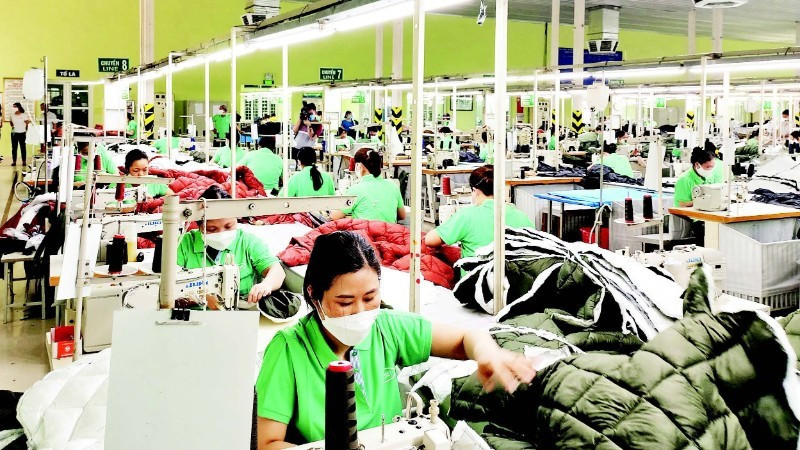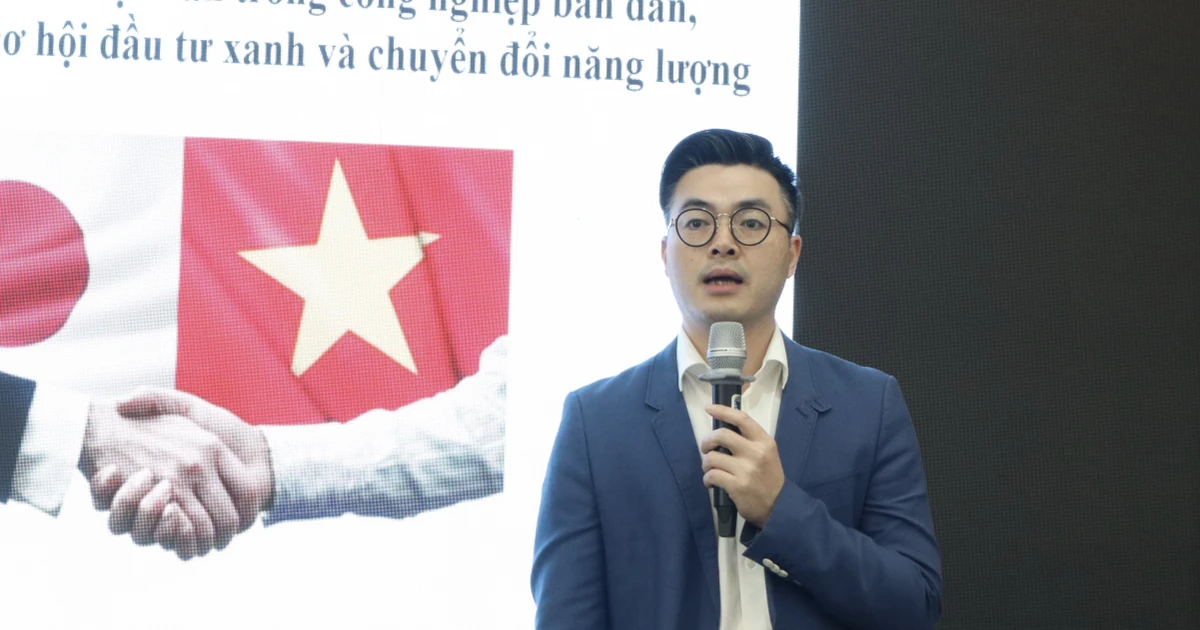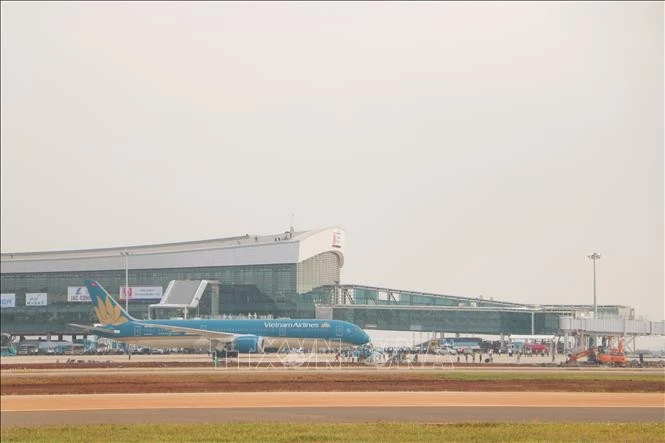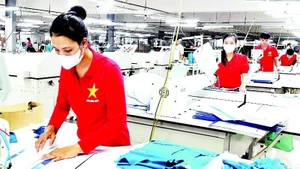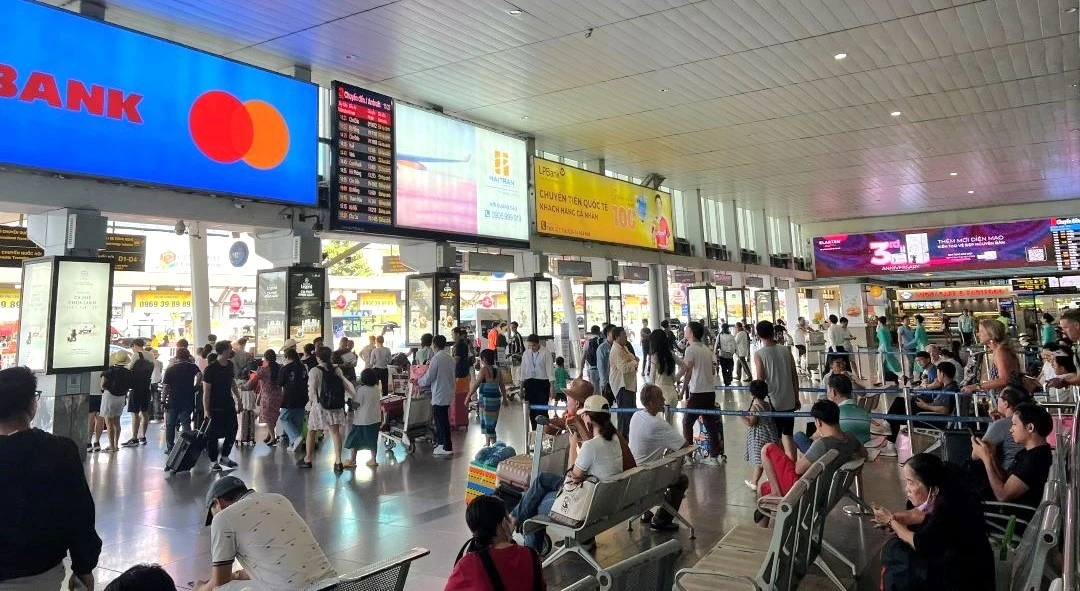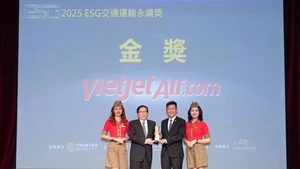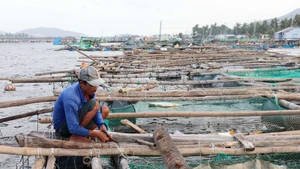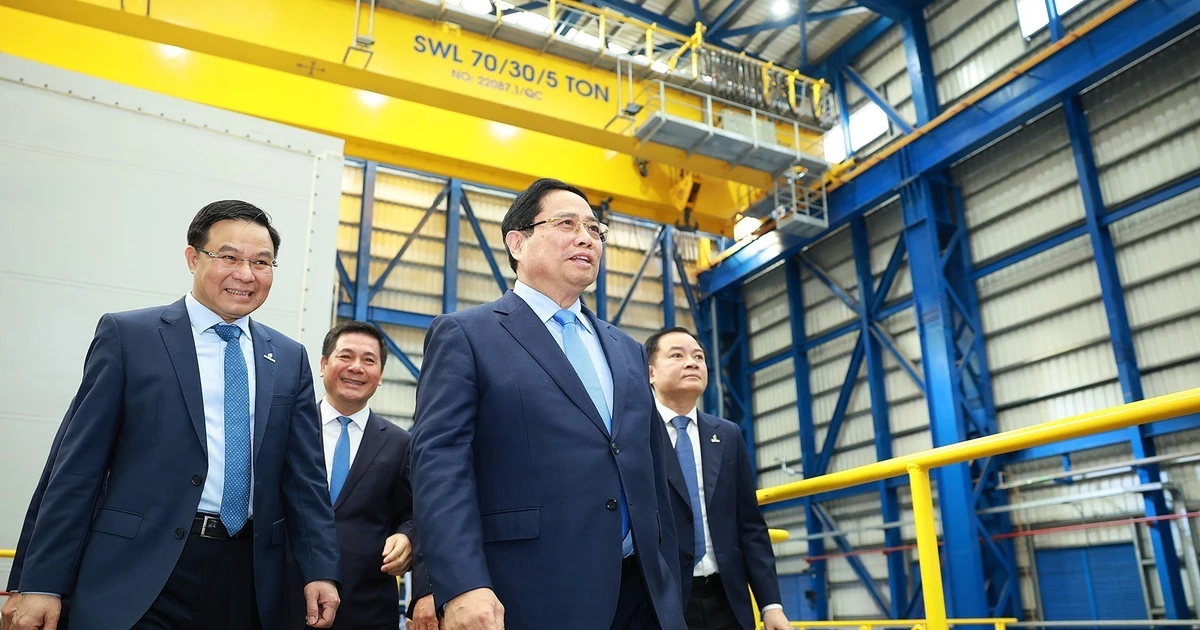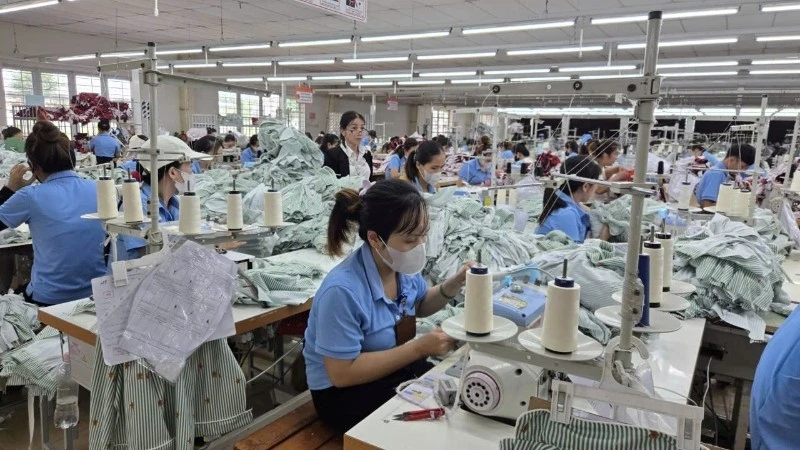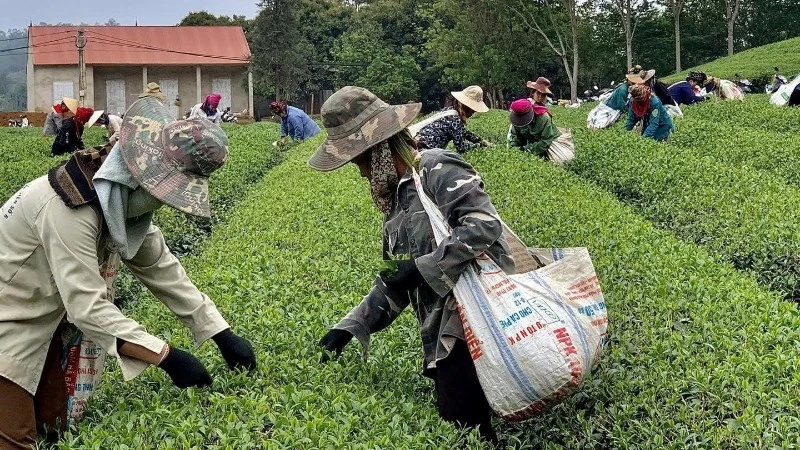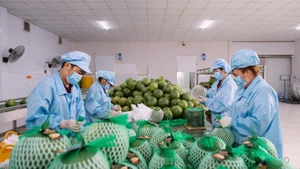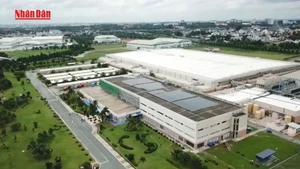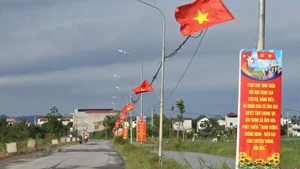In addition to mainly receiving garment processing and little investment in modern machinery, the textile and footwear industry still depends on more than 60% of imported raw materials and accessories, so when the supply is interrupted, businesses will be affected.
To promote the development of the fashion industry, it is necessary to soon form industrial zones and clusters with chain investment, especially establishing centers for chain development research; design, fashion shows, etc.
Many bottlenecks
In the early 1990s, the Vietnamese fashion industry such as textiles and footwear mainly processed for Eastern European countries. After that, businesses began to have to find their own markets and gradually shift to exporting to Western European countries. By the end of 2000, the export turnover of textiles and footwear reached more than 3.2 billion USD, accounting for about 35% of Viet Nam’s export turnover, of which textiles reached 1.8 billion USD, and footwear reached more than 1.4 billion USD. Viet Nam’s fashion industry has transformed strongly, becoming one of the five main export industries of Viet Nam.
Up to now, the textile and footwear industry continues to be a key industry of the economy with 16,348 enterprises, creating jobs for nearly 5 million workers, accounting for 22% of the industrial workforce; contributing significantly to the development of the labor market, employment and social security.
The export revenue of textiles, garments and footwear in 2024 will reach more than 71 billion USD (textiles and garments over 44 billion USD, footwear over 27 billion USD), with an average growth of 10%/year, accounting for nearly 16% of Viet Nam’s total export turnover and aiming to exceed 100 billion USD in the coming period.
Over 40 years, the fashion industry has become one of the key economic sectors. Chairman of Gia Dinh Group Nguyen Chi Trung said that, in addition to the achievements, there are still many bottlenecks that prevent the fashion industry from catching up with domestic and foreign demands.
Faced with rapidly changing fashion trends, especially the increasingly high and strict requirements of partners and brands, in order to meet market demand and make the most of the opportunities from the free trade agreements that Viet Nam has signed, businesses must invest in modern equipment, master the supply of domestic raw materials and accessories, and avoid dependence on imports from foreign countries.
“Only by doing so can we increase product value, enhance competitiveness, and at the same time limit negative impacts and avoid adverse effects from changes in mechanisms and policies brought about by some major markets,” emphasised Trung.
Sales Director of Bao Minh Textile Company Pham Quang Hai also affirmed: Although the export turnover of the Vietnamese fashion industry always accounts for more than 10% of the total export turnover of goods nationwide and is the world's top 3 largest textile and footwear exporter, the value is low because most businesses do outsourcing, depend on customer orders and import from outside. That not only limits the initiative to innovate and develop designs of domestic factories, but the advantage of cheap labor will also gradually disappear in the next few years.
Therefore, it is necessary to promptly resolve the bottleneck of raw materials to help businesses proactively produce as well as increase opportunities for linkage, cooperation in product development and promote export of goods.
Along with that, provinces, cities and the State need to have support mechanisms to attract investment in the fields of fiber, weaving, dyeing and product finishing so that businesses can confidently invest and increase operational efficiency.
Improving competitiveness
On December 29, 2022, the Prime Minister issued Decision No.1643/QD-TTg approving the Strategy for the development of the Vietnamese textile, garment and footwear industry to 2030, with a vision to 2035, which clearly defines the goal of developing the industry effectively and sustainably according to the circular economic model; perfecting the domestic production value chain, effectively participating in the global value chain; developing a number of regional and world-class brands.
To implement the above strategy, the Viet Nam Textile and Apparel Association (Vitas) and the Viet Nam Leather, Footwear and Handbag Association (Lefaso) have submitted a solution to build a research center to develop the supply chain of the Vietnamese fashion industry in the 2026-2030 period with the goals of connecting and developing the fashion supply chain; display, introduce, test new materials and technologies... However, up to now, the project is still only in the research and planning stage - from there to reality is still too far away.
Lefaso Chairman Nguyen Duc Thuan emphasised that the export target of more than 100 billion USD requires the textile and footwear industry to take into account the problem of proactively sourcing raw materials and accessories, and to achieve a domestic raw material ratio of about 70-80% within 5 years at the latest.
“Only then can we cut down on intermediaries, reduce costs, increase product value and improve competitiveness in the market”, he said. Thuan also proposed that the Government should boldly create a breakthrough mechanism so that the textile and footwear industry can have a center for developing, producing and displaying raw materials, as well as a research center, laboratory, etc.
According to Vice President of Vitas Than Duc Viet, one of the important contents in Decision No.1643 of the Prime Minister is to develop the supporting industry as well as centers for supplying raw materials for the textile and footwear industry. However, after more than 2 years, the implementation process is currently relatively slow.
Director of the Department of Industry under the Ministry of Industry and Trade Tran Viet Hoa acknowledged that it is necessary to focus on building a research center to develop the supply chain of the Vietnamese fashion industry to transfer technology and be a bridge between businesses and foreign markets.
